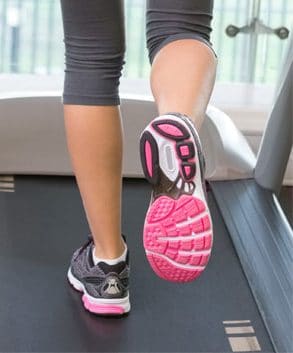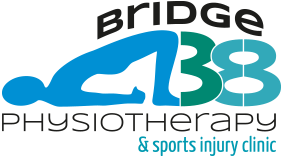The Achilles tendon is a common injury for runners but also one of the more frustrating injuries to treat if not addressed correctly from the onset. In this blog, we will look at what Achilles tendinopathy is, what causes it and how to manage it.
is, what causes it and how to manage it.
Role of the Achilles Tendon
The Achilles tendon runs from our calf muscles, the gastrocnemius and Soleus and attaches into the heel bone. The calf/Achilles complex has a dual role in running – it helps to decelerate us as we put our foot down, and then helps to propel us forward as we contract our calf muscle. It acts a bit like an elastic band, storing energy when stretched during the decelerating phase, then using this stored energy to help propel us forward when contracting the muscle.
Achilles Tendinopathy
Our tendons much like other areas of our bodies are in a constant state of breaking down, repairing and rebuilding new tissue which is called synthesis. Loading the tendon too much and too frequently can cause the amount of tissue breakdown to exceed the tissue synthesis leading to tendinopathy.
Tendinopathy is when the structure of the tendon starts to change and becomes less efficient at dealing with load (running). There are different stages for tendinopathy and it is vital to understand and know which stage the tendon is in as the management of each stage is different.
Reactive Tendinopathy
Reactive Tendinopathy is the first stage and is typically from a response to a sudden or rapid increase in activity or loading. Suddenly increasing the volume of miles or time running can cause it or increasing the intensity of running with sprints or hills.
The reaction in the tendon causes swelling due to movement of water into the tendon matrix and is often painful at this stage. We know that this stage doesn’t involve an inflammatory process which is why it is now called a tendinopathy and not a tendinitis. The tendon structure remains intact and the collagen fibres- the building blocks of the tendon remain unchanged.
Tendon Dysrepair and Degenerative Tendinopathy
Tendon dysrepair often follows a reactive tendinopathy if the tendon is not allowed to recover and repair sufficiently at the reactive stage. The tendon structure begins to change with some breakdown of the matrix in the tendon. At this stage, new blood vessels (neovascularization) and nerves increase – these are thought to be contributing factors that increase your pain.
Degenerative Tendinopathy: This is common in the older athlete. There is a more dramatic change of the tendon structure and the tendon can appear thickened and nodular.
Symptoms
- Pain when running which may ease off as you warm up only to return later in the run.
- Pain can be felt much later after the activity has finished such as 2 -24hours after finishing.
- The pain may start off gradually over time and then becomes noticeably more frequent.
- There may be swelling or thickening in the mid portion of the tendon.
- Pain as the Achilles inserts into the heel bone is more suggestive of insertional Achilles tendinopathy, which is important to understand as management of this condition differs from the mid portion.
- Going up and down stairs may be painful too as you load the tendon.
- It may be stiff or tight first thing in the morning but then ease off as the day goes on only to return later in the day.
Treatment
If the problem is identified early on and managed appropriately it can often resolve quickly and fully. It is unlikely to go away on its own and complete rest may not be the best answer.
This section is going to deal with the mid portion and not an insertional Achilles tendinopathy.
- Load Management is key at this stage. It may be advisable to have a short rest from running or at the very least you may need to reduce the volume or speed at which you run. This can be guided by your physiotherapist if you are unsure.
- If able to continue to run you must ensure that you run the distance and speed that has minimal pain pain during the run and resolving by 24 hours post run.
- Anti-inflammatory medication has been recommended in the re-active stage to help reduce the reactive response but not due to reducing inflammation. As with any medication consult the GP or pharmacists first.
- Ice can be beneficial for pain relief. Applying an ice pack over a cold damp towel over the tendon for 15 minutes can reduce your pain if severe.
- Heel inserts – Inserting a gel cushion in your daytime shoes as well as your running shoes may help to offload the tendon.
- Massage may help with pain relief or if the calf muscle feels tight.
- and finally:
Exercises:
Exercises can be important for both pain relief and building strength and robustness into the tendon. It is probably adviceable to see a physiotherapist to get specific guidance on what is most appropriate for your stage of injury. Below are 3 progressive exercises to work the local tissues of the calf/Achilles complex. It may also be important to address other causative factors such as training error, running form or weakness in other areas of the musculoskeletal system.
Isometric Exercises: Isometric calf work has been shown to reduce pain in tendinopathy and so is a very useful exercise to start in the early stages. Isometric means contracting the muscle without movement of the joint. To isometrically work the calf /Achilles complex lift the heels 1/2 way up from the floor and hold for 30-40 seconds. Rest and repeat this 4-5 times in each session. Do this 2-3 times per day. You might find a little pain on the first couple and then it tends to subside.
Calf Raises: Early calf strengthening exercise are calf raises which involve moving the heel up and down several times starting on the floor. This can be done with double leg and then progressed onto single leg. See here for a video explaining the calf raise
Eccentric Calf Exercises: This involves doing the calf raises with the heels off the edge of the step and lowering the heels past the level of the step. See here for the video. Depending on the nature and stage of your Achilles injury these may not be suitable exercises to begin with. A physiotherapist will help to guide you as to when you should do an eccentric programme.
For more information or to contact me please visit my website www.bridge38physiotherapy.co.uk
